I am thrilled to publish, on behalf of former student of Xenia Borovansky, Elizabeth Kennedy, this tribute to Joy Dalgliesh (1936-2024). As a result of her long friendship with Joy Dalgliesh, Elizabeth is able to reveal to us an image of Madame (as Xenia Borovansky was known to her students and others) that is quite different from what has been written elsewhere. Along the way she introduces us to other little known features of the world of the Borovanskys and I am sure readers will enjoy learning more about the Borovansky family, of which Joy Dalgliesh was clearly a member.
Michelle Potter, 27 August 2024.
*****************************************
Remembering Joy Dalgliesh
Elizabeth Kennedy
I first encountered Joy Dalgliesh in 1968 when I began lessons at the Borovansky Ballet Academy in Melbourne with Madame Xenia Borovansky. I cannot offer a completely dispassionate account: Joy and I shared many opinions on ballet matters and were bound to share biases as well.
In 1970 I received the first of what would become several invitations to accompany Madame on her annual summer holiday in Daylesford, initially staying at the Villa Camellia, the property of the Russian singer Mara de Renroff.
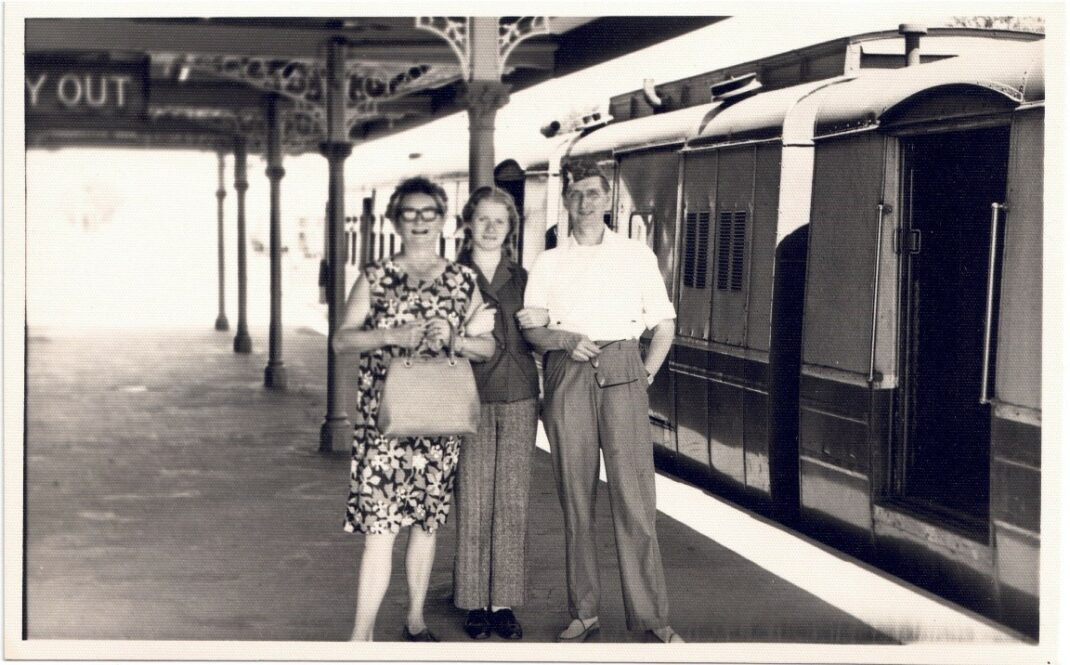
Shortly afterwards, Madame bought a holiday house of her own in Daylesford, and on and off over the next ten years I would visit her there or at her house at Grandview Grove where Joy, when not visiting her parents for the weekend, would sometimes be present.
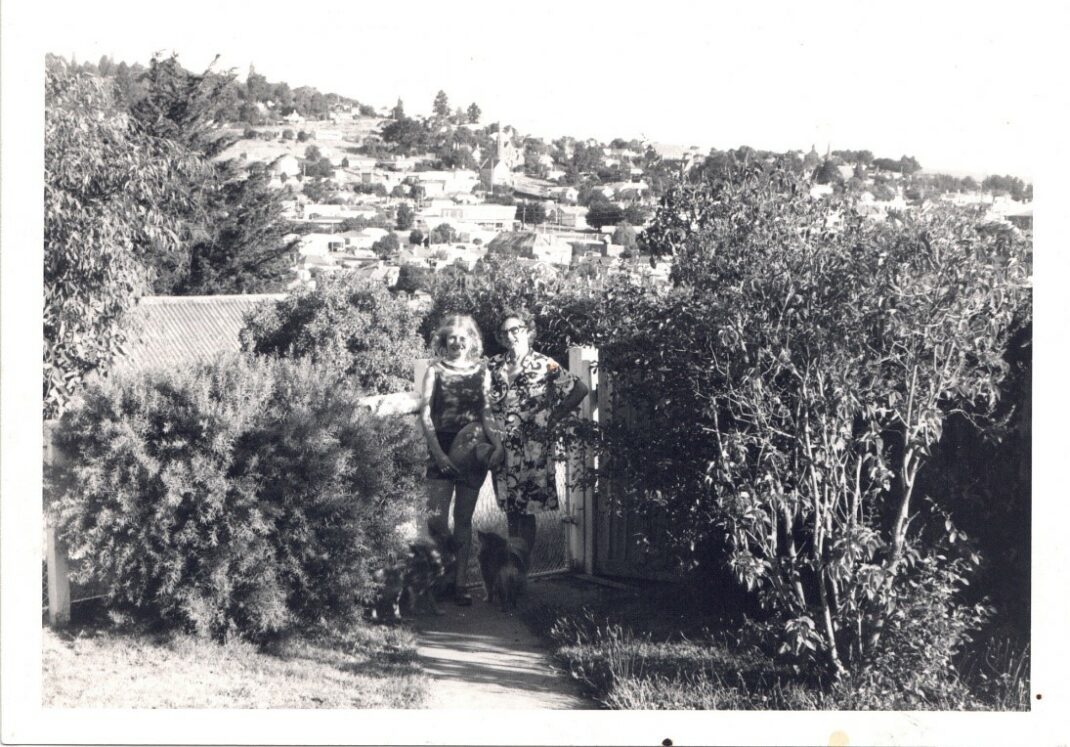
In 1980 I left Australia to live and continue my university studies in Scotland. On departure Madame gave me a signed photo of herself.
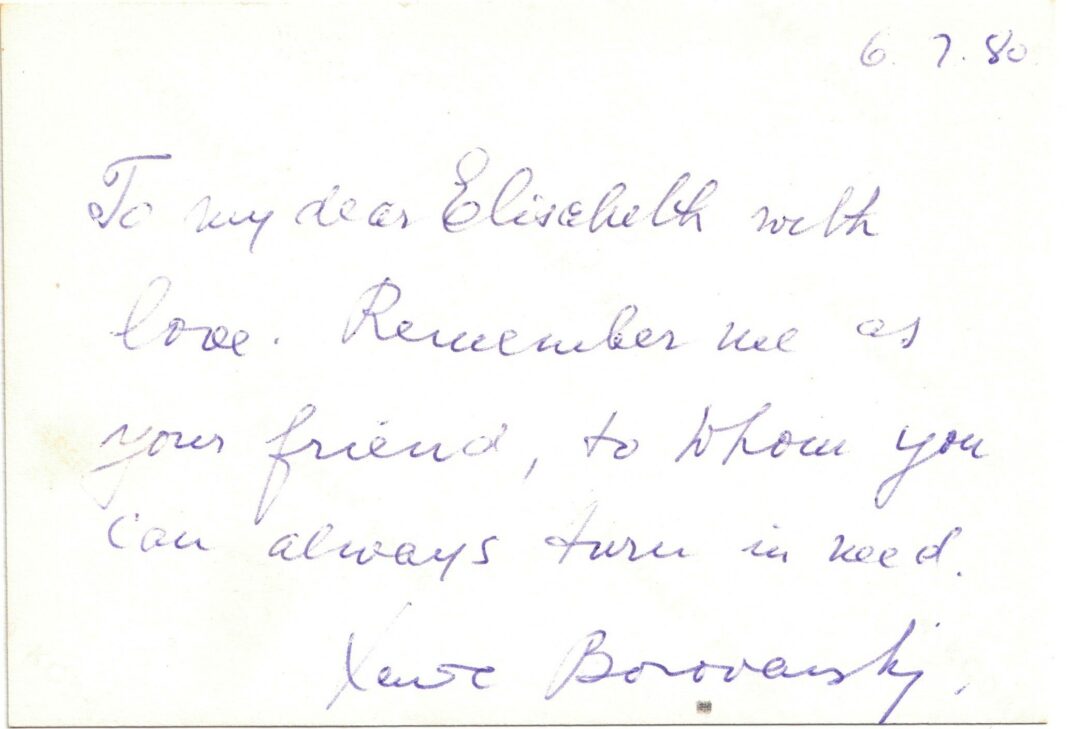
In the 1990’s Joy and I resumed contact, albeit from different continents, and from the early years of 2000 were in frequent communication. Our last contact was at the end of 2023, shortly before she died.
In 2013 Joy sent me some hand copied excerpts from some of the cards she received from Madame:
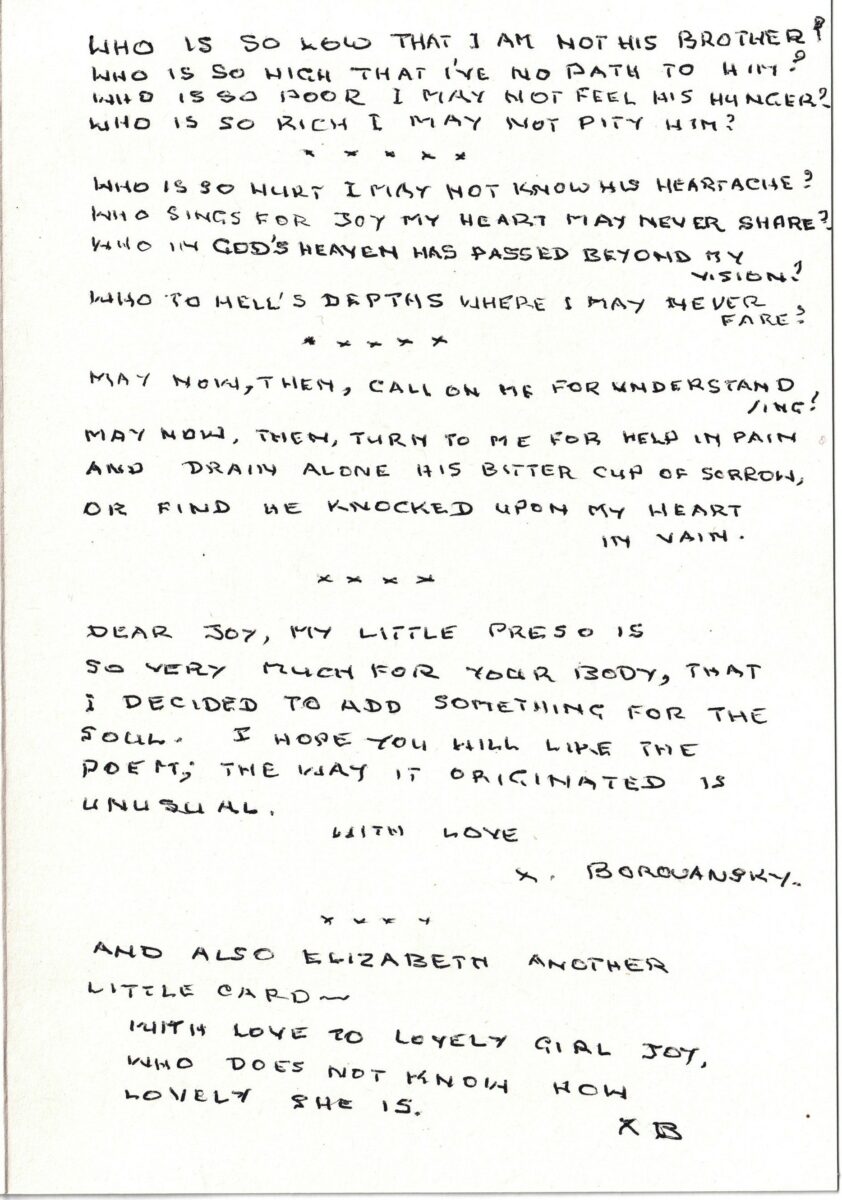
Joy arrived in Melbourne from Wodonga in the early 1950’s to work at a solicitors’ office, in the city of Melbourne, first training in book-keeping and subsequently as a paralegal. She worked in that capacity into her 50’s and then worked at the head office of The Age in Melbourne. She initially lived with an elderly Polish lady called Mrs Krause, a client of her employers, first at Kew and then in Burke Road, East Hawthorne, Melbourne. Joy was destined to live in that part of Melbourne for the next thirty years.
Through her work connections and in conjunction with those of the lady called Mrs Mackay, an invitation was extended to Joy to go and stay at 14 Grandview Grove, East Hawthorne, the Borovansky residence in Melbourne. Madame Xenia Borovansky had just been widowed, was effectively on her own, and inevitably vulnerable to the dubious characters who batten onto rich old widows. Madame Borovansky had no extended family in Australia who could give her security and comfort. Mrs Mackay, a close friend, called on Joy to lend what support she could. Joy accepted the invitation to stay with Madame—a short distance from where she was living at the time with Mrs Krause, just the other side of Burke Road. She became Madame’s family, her extended family, a shield, a rock and—in the final years—her carer.
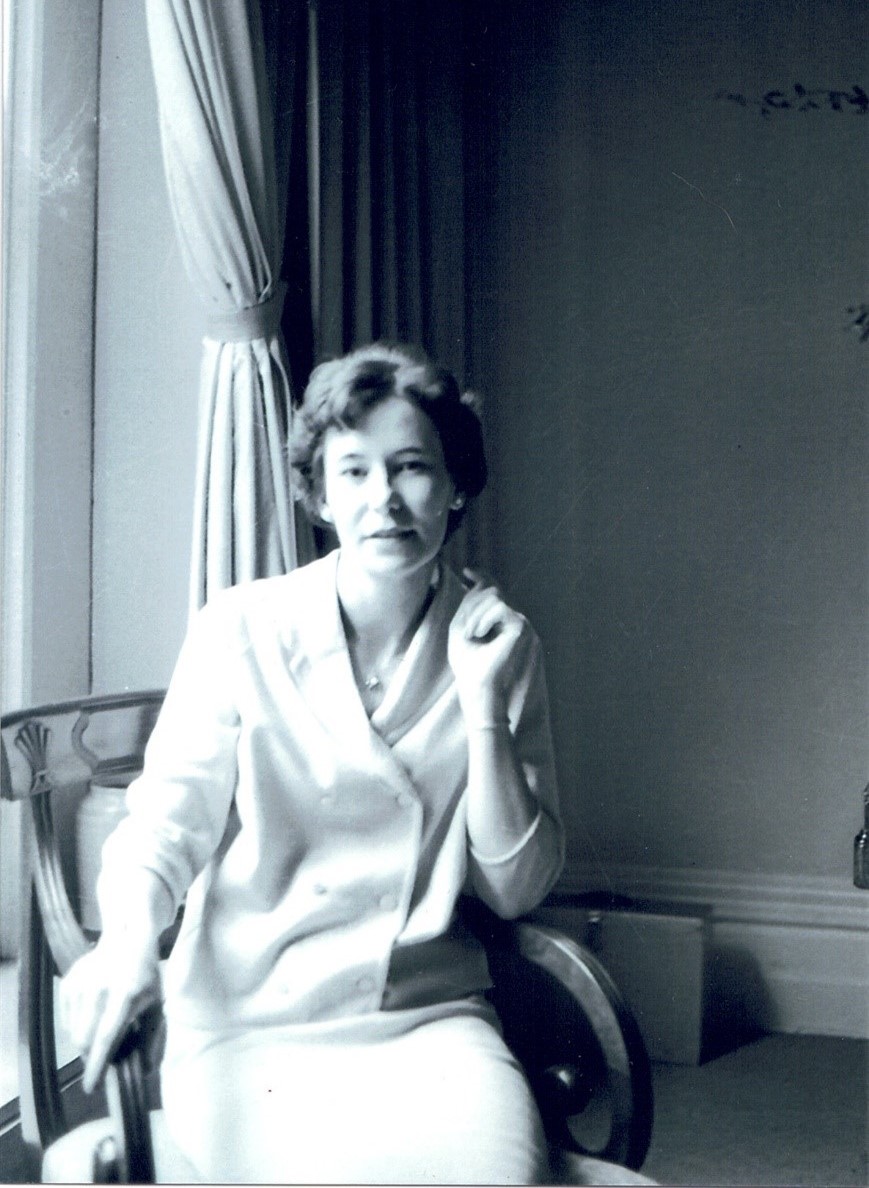
Joy’s love of ballet started in her childhood when she had private lessons while still in Wodonga. Once in Melbourne, for a long time outside her day job hours, she trained mostly with Martin Rubinstein who took her under his wing. When he was absent, examining, he nominated her to step in for him and take his classes—as an associate or, as Joy would say, his ‘sidekick. There was an occasion once for Boro to be present—always on the lookout for potential Borovansky Ballet candidates—so the critical eye of the dancing master did behold Joy briefly! But it was not to be—Joy’s great merit lay elsewhere, unbeknown at the time.
Edouard and Xenia Borovansky were great celebrities, moving in exalted circles on the Australian scene at the time. They had exceptional connections prior to their arrival in Australia: Pavlova, Fokine, Colonel de Basil, Picasso (the last two particularly well known to Boro): the whole world of beauty and glamour that classical ballet stood for in those days.
Joy attended many of the spectacular shows put on in Melbourne by the Borovansky Ballet Company and had many fond memories of these, including seeing Barry Kitcher dance in Graduation Ball. Through the good offices of Michelle Potter, Joy was able to make contact with Barry in recent years and get news of Martin Rubinstein and reminisce and exchange some ballet secrets. Of course, Joy well remembered seeing Boro himself perform in ballets such as Carnaval and Coppélia. She considered the Borovansky Nutcracker productions absolutely ‘the best’, compared to others she had been able to see in different formats over the years: the Borovansky ones, in her opinion, were ‘particularly true to the original conception of this Christmas ballet as actual childrens’ world of magic’. Joy also particularly observed that, unlike with ‘ballet companies these days where there’s a stream of directors Boro did everything himself’—not to mention the fact that ‘he spent all of his earnings on his dancers’ salaries and company costumes’, while his wife Xenia had to foot the entire purchase price of the matrimonial home at Grandview Grove herself. (The house was in her name alone).
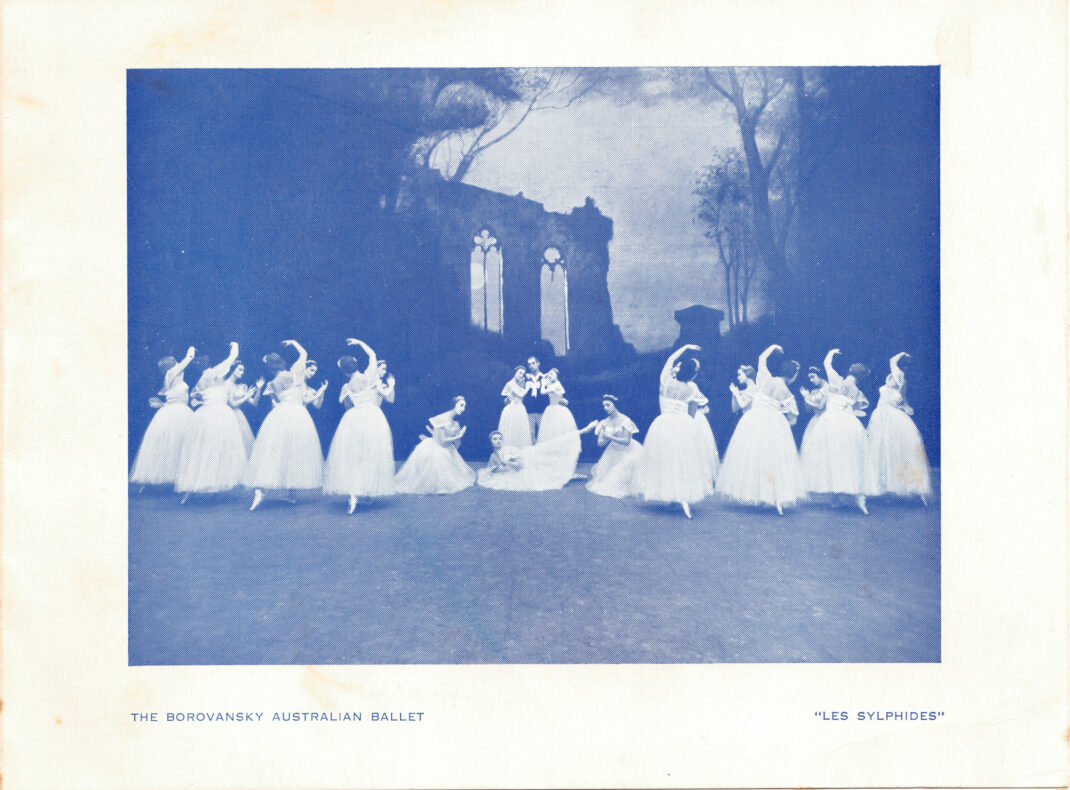
Over many years, part of the inner sanctum of Madame’s private world, Joy was able to observe and hear much that went on in Madame’s life, both prior to arriving in Australia and after Boro’s early death at the end of 1959. For that, Joy was envied and maligned in equal measure—albeit nothing would deflect her from what became her life’s mission. She knew the back stories to the gossip and trouble alluded to by Frank Salter in his book on the Borovansky phenomenon in Australia. She would relate with amusement or deliberation, as the case may be, many anecdotes. One such goes back to the time of Anna Pavlova when she was in Monte Carlo with her ballet company. The dancers were not greatly remunerated in those days, in fact, they were all quite poor and at times had to scrape around to feed themselves. On this particular occasion somebody came up with a solution: they pooled all their current resources and sent Feodor Shevlugin off to the Casino to gamble in order to secure the necessary funds for some provisions. Off he went and a while later returned with stacks of baguettes and onions. The onions were duly fried, spread out inside the baguettes and eaten with relish; they did all this self-catering in the part of the hotel which was at the other end to where Madame Pavlova had her rooms, but the feast was sufficiently fragrant for her easily to detect.
Another of Joy’s anecdotes concerned Robert Helpmann and Rudolf Nureyev. When Nureyev staged Don Quixote for the Australian Ballet Company, during the Arts Festival held in Adelaide in 1970, he and Helpmann had been staying at a house belonging to Mrs Mackay’s family. Whereas Nureyev graciously paid the rental for his share of the accommodation, Helpmann did not. Apparently, Joy said, ‘he considered himself entitled’.
With Madame’s influence over the world of ballet for many years it was natural that Joy would look for beauty and perfection in the Vaganova Method. In recent years she would spend hours on her iPad watching YouTube videos and purchasing DVDs of some of the latest fabulous dancers representing that school. She adored Svetlana Zakharova, Ulyana Lopatkina and Svetlana Lunkina. Joy considered Lunkina ‘the best Giselle’ and that Zakharova ‘had the best feet’. In contrast, watching Margot Fonteyn in Ondine and the Rose Adagio in The Sleeping Beauty she noticed how Fonteyn, ‘sickled her foot when doing the retiré and développé,’ and ‘sickled her left foot behind the leg in pirouettes’. Of the male dancers in more recent times, Joy adored Roberto Bolle and referred to him as ‘the most beautiful chap’.
In contrast, she would say of Robert Helpmann ‘Helpmann couldn’t dance’. Indeed, she reserved her greatest scorn and criticism for this fellow Australian and the mythology that went into overdrive surrounding him. She found particularly distasteful the means Helpmann, van Praagh and other anti-Borovansky fellow travellers, deployed over the decades to undermine the Borovanskys’ achievements, and their attempts to relegate to obscurity the company and its huge contributions to Australia.
Joy was not alone in Australia in casting a jaundiced eye in Helpmann’s direction, as correspondence in The Herald in 1968 makes clear.


The 1980 gala tribute celebrating Borovansky’s work as the founder of ballet in Australia, was held at the Sydney Opera House by the Australian Ballet under the directorship of Marilyn Jones, and attended by Madame Borovansky, her friend Mrs Mackay, Sanderman, and Edna Busse; alas, Joy stayed behind at Grandview Grove looking after the house.
The Australian Ballet 50th Anniversary Gala in 2012 was received by Joy with sadness: ‘There was no scenery, little pieces and it wasn’t classical AND no mention was made of the Borovanskys. For a long time, people called the Australian Ballet Company The Borovansky Ballet Company.’
This was the background against which Joy’s mission in life crystallised. Australia, she felt, owed the Borovanskys a debt of honour and something needed to be done. As a proud Australian, in her own modest fashion, she committed her life to the surviving member of this extraordinary couple, dedicating herself to Madame—at work, in the Borovansky Ballet Academy studio, and (increasingly) at Madame’s home. It was Joy who secured the state pension for Madame, when Madame was told, in no uncertain terms, that none would be forthcoming in her case. It was Joy who was there for Madame when fire ripped through one of the flats forming part of 14 Grandview Grove, through the negligence of a tenant. It was Joy who looked after and kept house for Madame. And when cancer was taking increasing toll over Madame’s ability to look after herself independently, Joy became her constant carer and companion enabling Madame to stay in her own home to the very end.
A Russian Orthodox priest was called the night before Madame died. Mrs Mackay (who lived very close at ‘the grandest place in Burke Road’ and visited regularly in the evenings to play Chinese chequers with Xenia) arrived by taxi an hour before she died. Joy was already there on her knees by the bedside.
Edna Busse arrived from Wagga Wagga to find Joy waiting to set off to the funeral. Joy told me that Miss Busse pointed to her saying to the undertakers ‘Oh, she’s just a tenant’, and demanded that Joy ‘take off those black shoes and those black clothes!’ Some tenant! Although comically snobbish, Joy was hurt and reflected afterwards on what had possibly produced the outburst—her only hypothesis was that Miss Busse was wearing one of her light-coloured, signature vintage ‘Jumper’ dresses of her own making and realised Joy was perhaps more appropriately dressed.
After Joy left Grandview Grove she lived for another 38 years. She remained very loyal to the memory of Madame and Edouard Borovansky.
She died just short of her 88th birthday. A Memorial Service was held on 26 July 2024 in Doncaster, Victoria. Joy was one of those rare Australians—a national treasure.
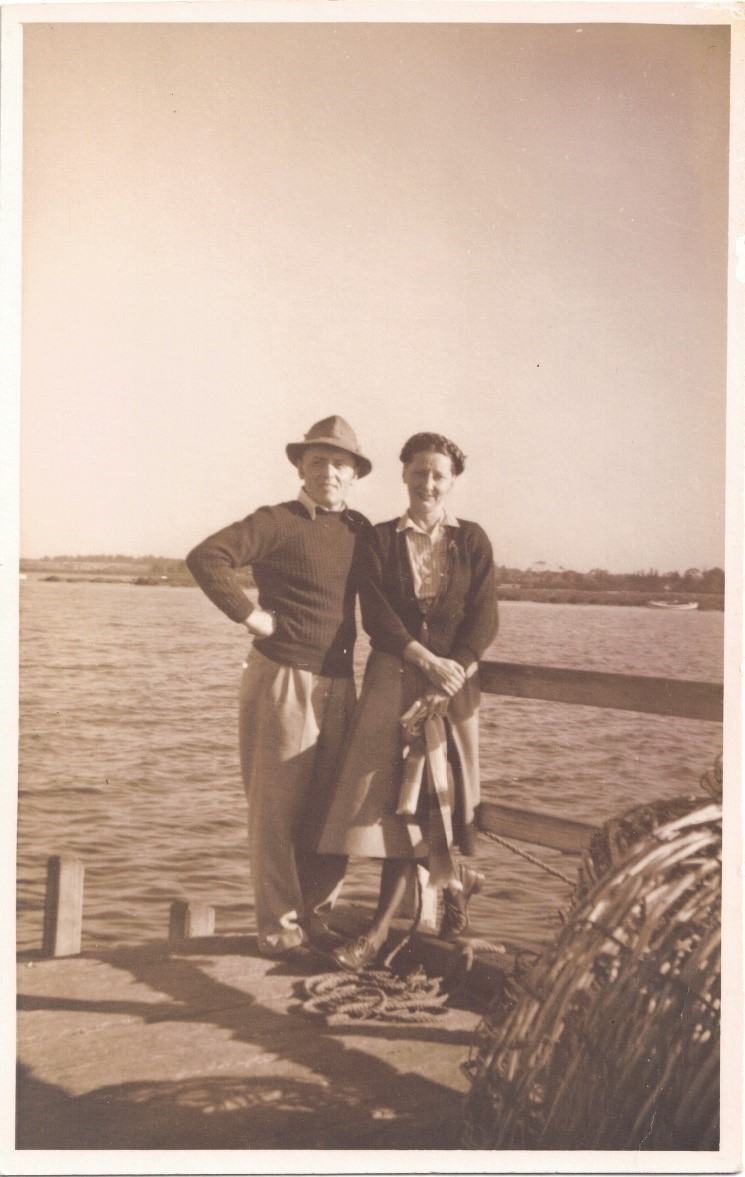
Books referred to in the text:
- Kitcher, Barry. From Gaolbird to Lyrebird—a Life in Australian Ballet (2001 edition now sold out) new eBook edition (BryshaWilson Press, 2016) now with over 340 images compared with around 100 in the 2001 printed book.
- Salter, Frank. Borovansky. The Man Who Made Australian Ballet, Wildcat Press, Sydney, 1980.
Elizabeth Kennedy, 25 August 2024
Featured image: Extracted from ‘Joy taken by V.R. Smirnoff, Madame Borovansky’s brother, at Grandview Grove sometime in the 1970s’. (Full image above)
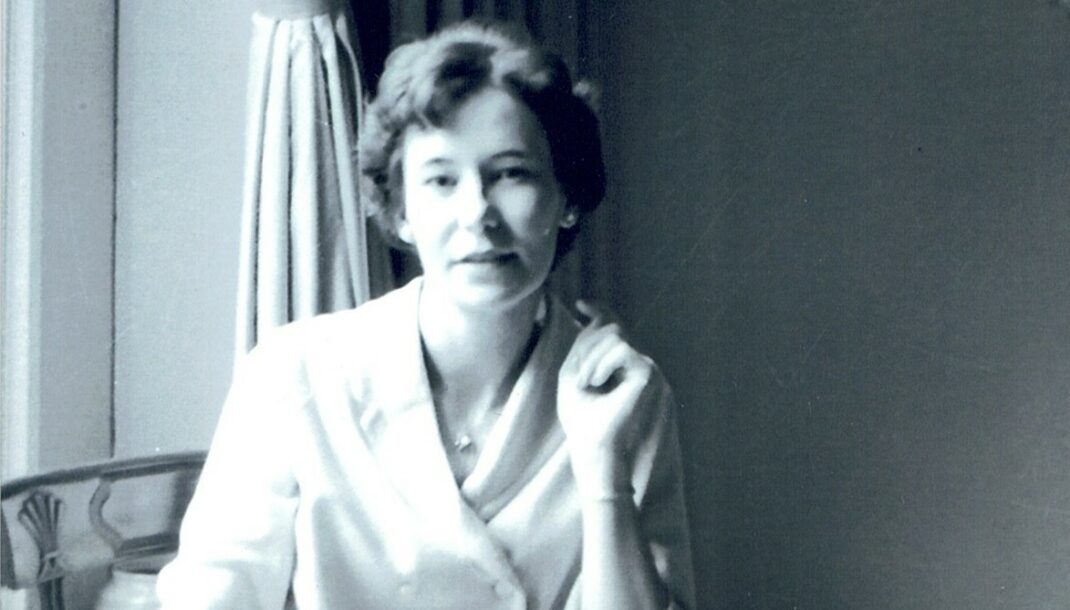
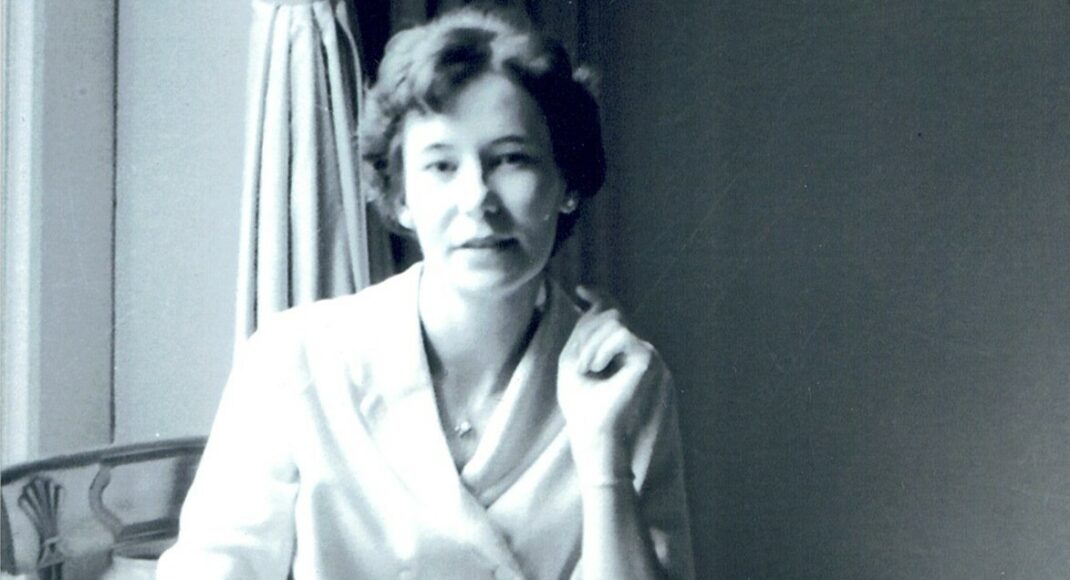
I was fascinated by this account. Madame was clearly so much front and centre it is tragic she is not better known. The ballet world can be so cruelly driven by fashion.
Thank you for introducing me to Madame and her work.
Thanks for this comment Siobhan. I agree that Xenia Borovansky should be better known. I was really pleased to be able to post Elizabeth Kennedy’s tribute to Joy Dalgliesh. It opened up a lot of previously unknown information.